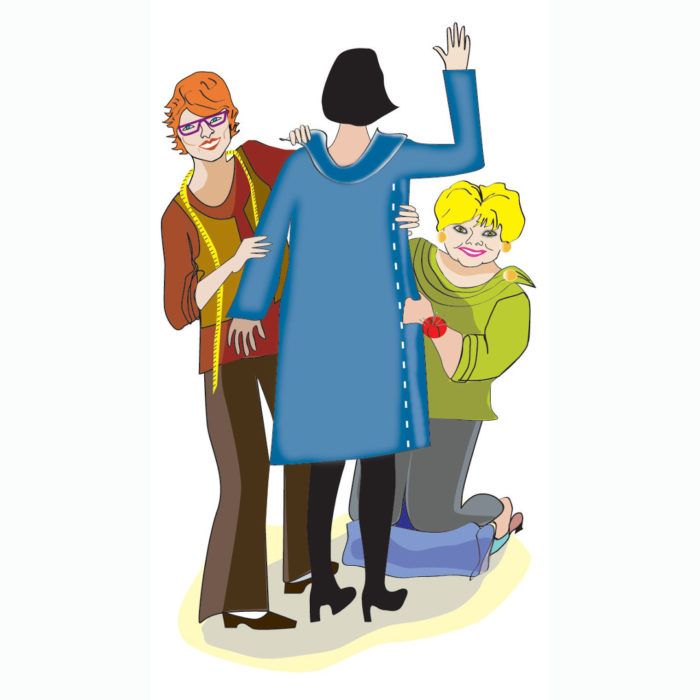
Linda Lee and Louise Cutting as illustrated by art director Rosann Berry.
Sewing professionals Linda Lee and Louise Cutting have spent the last few years traveling and teaching together, not only at their own hands-on sewing retreats throughout the United States, but also at American Sewing Guild conventions and other national venues. They specialize in working with sewers who have special fitting issues, and they enjoy seeing the results of what a few basic alterations can make in the final success of garments.
What Linda and Louise have discovered is, that while there are certainly many individual fit problems that need to be solved, there are also a few common issues that surface over and over that almost every sewer would benefit from knowing.
Here Linda and Louise share solutions to two of the most common fitting problems they have encountered in their workshops.
FITTING PROBLEM: Wrinkles Below the Derriere
Wrinkles below the derriere can occur as a result of several different problems: a low or flat derriere, or the pelvis is thrust forward slightly. You may not know you have these figure issues because they’re so minor, but the following alterations make a huge improvement in fit for many people. A well-fitting pant should fall directly from the fullest part of your derriere.
LINDA’S SOLUTION:
 Measure 1 1/2 inch down from the crotch point on the back pattern piece and draw a horizontal line to the side seam. Starting at the inner leg seam, cut along this line, stopping at the seam allowance.
Measure 1 1/2 inch down from the crotch point on the back pattern piece and draw a horizontal line to the side seam. Starting at the inner leg seam, cut along this line, stopping at the seam allowance.
Overlap the pattern at the inseam from 3/8 inch to 3/4 inch (the illustration to the left only shows what the pattern looks like after cutting, and before you overlap it). Tape the pattern in place and redraw the inseam to its original shape. When sewing the pants, ease the front seam to the back seam through this area. But since the seam is slightly on the bias, there is more give in the fabric and it is easy to do.
FITTING PROBLEM: Bodice is too tight
Use this technique when the neckline and length of a garment fit you well, but the bodice circumference needs adjustment. You can control the garment circumference with a few easy alterations. If a style is just a bit smaller than desired this is a great way to add ease in the circumference. Check the sleeve length, when doing this alteration; the sleeve becomes longer with this alteration.
LOUISE’S SOLUTION:
 1. Adjust the fullness in what we refer to as “No Man’s Land”-the spot along the shoulder seam halfway between the neck edge and the sleeve seam. You won’t bump into any major garment details there and you will be able to take as much excess fullness out as you want. To start, draw a straight line from the shoulder seam center down to the hem parallel to the center front.
1. Adjust the fullness in what we refer to as “No Man’s Land”-the spot along the shoulder seam halfway between the neck edge and the sleeve seam. You won’t bump into any major garment details there and you will be able to take as much excess fullness out as you want. To start, draw a straight line from the shoulder seam center down to the hem parallel to the center front. 2. Spread the new pattern pieces apart adding the desired amount of room in the bodice. Tape down the pieces and redraw the shoulder seam from the neck seam to the armhole seam.
2. Spread the new pattern pieces apart adding the desired amount of room in the bodice. Tape down the pieces and redraw the shoulder seam from the neck seam to the armhole seam.
For six more tips from Louise and Linda, check out Threads issue #146 available on newsstands on 11/10/09. Techniques include adding room to a sleeve that’s too tight, adjusting a bodice for sloped shoulders or a rounded back, and fixing a collar that keeps falling back.
For more on Louise, check out her website, Cutting Line Designs.
For more on Linda, check out her website, The Sewing Workshop.


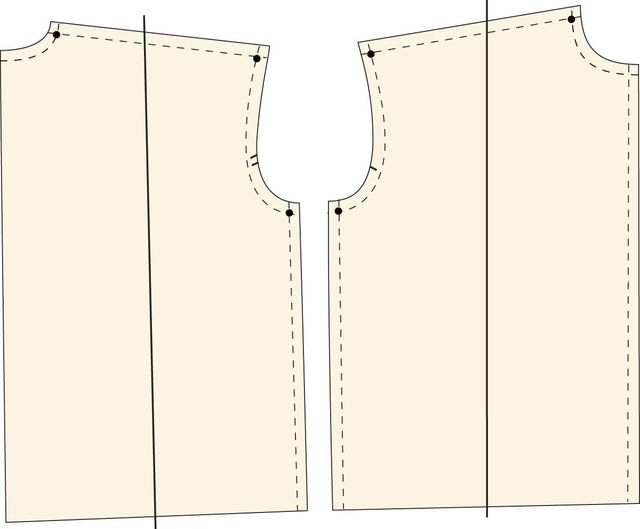
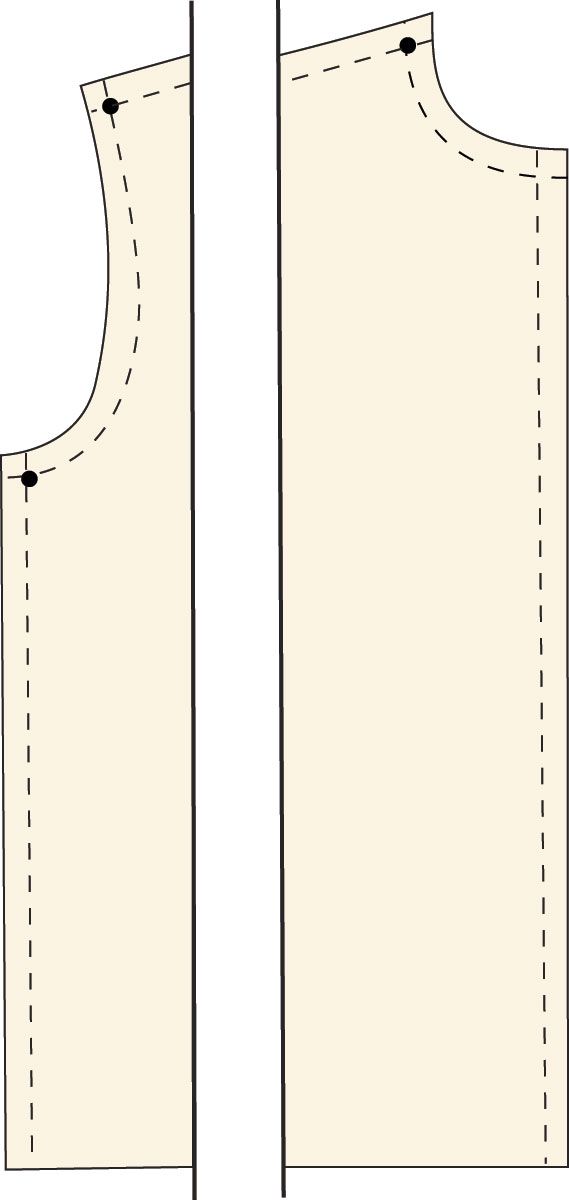
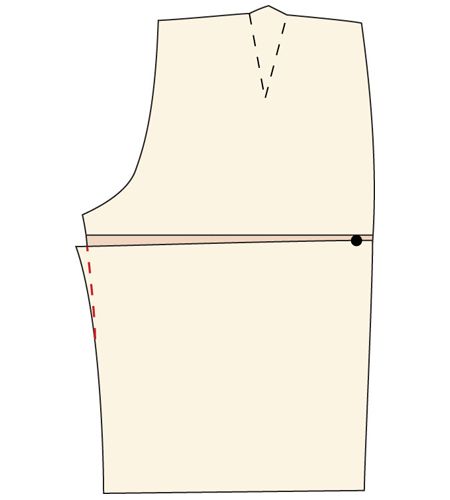
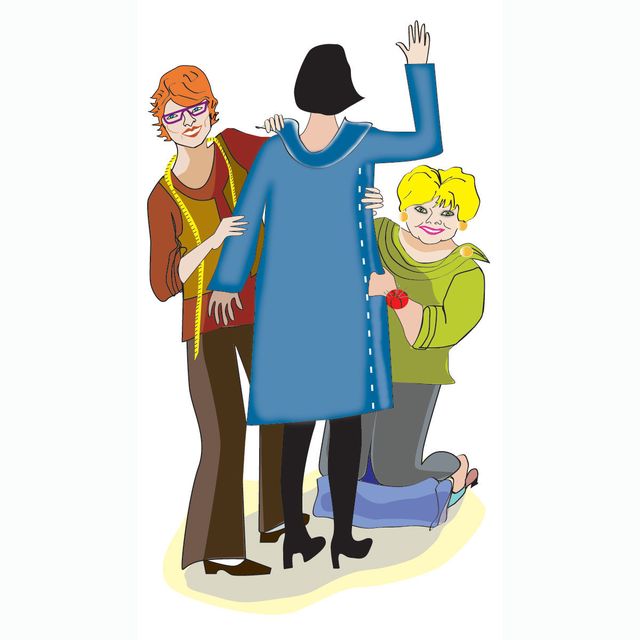
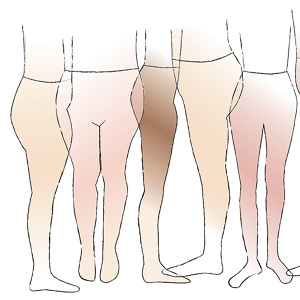

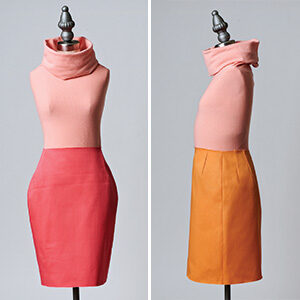
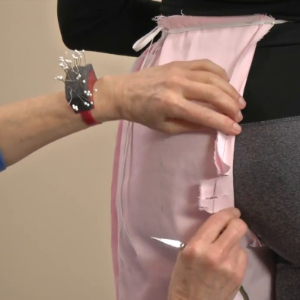
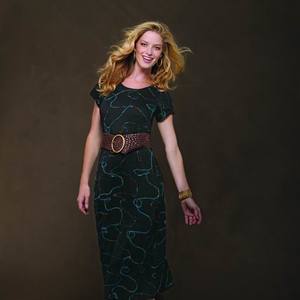

























Pants are probably the most difficult to fit. Especially if one has a flat or low seat. I have both. I will try your solution. Thanks so much for this Online Extra. More please!
Patti
The bust adjustment is not the best choice ... especially if you are looking for a well fit garment ... this version just makes the shoulder bigger & sloppier and will distort the neckline ... and, the armhole will have a creased area because the increase amount is too much for the armhole ... better to insert and adjust princess seams or insert darts ... but don't just make a 'bigger' bodice assuming the entire frame is bigger.
tried this with calico but found the shoulders too wide but the bust great
I do not like this bodice adjustment at all. I agree that it will mess with the shoulder line. I much prefer doing a full bust adjustment.
What the .....? I'm not an experienced seamstress, but common sense tells me that this bodice adjustment is just plain sloppy. Louise needs to add a little more explanation as to how she came up with this one! Like it may be okay to use this method if you're only adding as much as one inch. Even that much is enough to throw things wonky. Or maybe this method is only good to use on VLF garments. Or...? Like Number 5 says in the movie Short Circuit, "Need More Input!!!"
This makes no sense at all. Description #1 talks about taking fullness out of the bust area and #2 talks about adding fullness to the bust. Neither one of these will work -- either shoulders will be way too narrow or way too wide.
There's a better way to do that bodice adjustment. Most people, when they need more room for the bust or waist don't want to change the shoulder seam, sleeves or neckline. If that's the case, then try this:
1. Trace the pattern piece you want to alter. You don't necessarily want to cut the original.
2. Lay the it out on a table.
3. With a yardstick, draw two lines:
- One from the side seam at the bottom edge of the garment (if a blouse) or the bottom of the bodice (if a dress), to the center front,
- The other line goes from the center front to just under the armhole.
4. You should have a sideways Vee. Cut the pattern on the vee, and then pull it apart to the measurement you need.
5. If you need more space at the armhole then draw the second line from the center front to the center of the armhole. You'll need to mess with the sleeves or facing, but it's not especially complicated to do that.
This gives you space through the bust without having to mess with shoulder and arm hole seams. If there are buttons/button holes, they won't move - you're just adding some width. The garment will remain in proportion.
Remember that if you need to "buy" more than an inch or so on any garment, you probably want to go up a size. This solution is best for busty ladies.
Louise Cutting is a patternmaker. I cannot believe that she suggests this sloppy bust adjustment! Isn't there no editing at Threads? You don't need much fitting experience to see that the altered garment will fall of the shoulders!
Very disappointing!
Fitting is as individual as bodies are. Generalizing on fit and pattern corrections without more specific details is not only irresponsible, but it confusing to people that have little experience and are trying to understand the correct way to fix patterns.
Is the garment tight because the persons back is too wide, which would pull on the front?
Is it because the bust projection is larger than the standard C cup?
Is it because the pattern used is too small for the person's body
Is the depth of the armholes at side seams wide enough to accommodate a person's wider body?
Are the armholes or the sleeve too scooped out impeding movement?
Is the front neckline too wide, and the back neckline not wide enough?
There are many, many reasons why a correction maybe needed, and there are as many options to change a pattern.
Understanding individual body shapes, the body stance, what styles will look better on particular body shape, how to enhance certain areas of the body to look taller, thinner, wider would be much better idea to help people in understand how pattern shapes relate to the body shape
I agree with Messyone on this bodice too tight solution. For those of us with tiny rounded shoulders, this adjustment would fall off our shoulders completely. It would give the added dimension to the bustline that we sometimes need, but messyone's method makes sense to me. I will try it but probably not Louise's method. Thanks messyone!
I have lost weight lately but can not afford to buy new clothes. Does anybody have suggestions on taking in large shirts & blouses? I would also like suggestions for adding side pockets to pants & blouses that have no pockets. I no longer carry a purse & only want clothing with pockets similar to men's clothing.
nannysmith - to alter clothing for weight loss you have a number of choices, depending on the style of garment & how well it fit you originally.
If the garment is too big overall, sometimes the simplest thing to do is take it apart, press the pieces, and lay a new pattern on it & recut. For blouses, you can often preserve the yoke & collar, simply narrowing at the shoulders. The front placket can also be reused - lay the new pattern piece so the center front mark is on the center front of the old placket.
For pants you can do the same -especially for pull-on styles. For pants with a front fly & pockets, it may be more work than it's worth - hit the thrift shops for some pants that fit & watch for fabric sales (or dig into your stash if you have one) to make a few low cost pairs.
If a top or dress generally fits well but is too loose through the torso after weight loss, some fitting can be managed by tapering the side seams and adding darts. For a little different look, a series of pintucks can be used to all shape - this can also be done on sleeves that are now too voluminous - several high-end women's catalogs are showing this in their current issue. The pintucks can also be released at the bust and/or hips to provide ease.
nannysmith, One of the most frequent alterations I do is take up the shoulders of a garment. I do this on ready wear, but I'm sure it could be a pattern alteration as well. You will be amazed at how everything falls into place when you pinch an inch or so out of the shoulder area of a top or dress that is too big. The bust snugs up, the neckline goes where it belongs and the armholes get smaller. Of course, tapering the sides as sewhappy1221 mentions might be necessary as well. Also, if you have a collar, it may not be worth the trouble. Good luck and take digital pictures along the way so you can remember how to put things back together! Maripat
Sorry, but I forgot to mention something in my earlier post. Cutting a pattern with that sideways vee is also one of the best possible ways to alter a bodice or blouse for someone who's long-waisted. All you have to do it add space vertically rather than horizontally.
The problem with the way most patterns are set up is that they make a straight line horizontally at waist level for lengthening and shortening. If someone is taller than average, then everything changes and adding length has to happen along the entire pattern, not just at the waist.
All of the darts need to be lengthened or shifted to keep things in proportion, and people who are tall and thin are usually tall all over, particularly in the upper body.
I want to clarify the adjustment in the illustrations above. This quick fix may be made in a high caped sleeved garment that just has a front and back with little detail. If you only added ½” to the front and back of the garment from the shoulder seam to the hem mid way from the neck to armseye parallel to the center front, this addition would not add that much to the shoulder seam and could be removed along the armseye from notch to notch (if needed)...but by the time you are at the bust area on the body, that ½” would add 2” to the total circumference from the bust area through the hem circumference. The shoulder seam would be ‘trued’ up. This adjustment is used if the garment fits in the neck area and going up (or down) a size would make the total garment too large or too small. The 2” added in the body circumference would not affect the sleeve being stitched into the garment because the additional circumference is not being added along the side seams.
If the pattern you are think about is a over sized blouse or top and again the neck circumference is the correct size, then a larger amount may be taken out ... shoulder seam ‘trued’ and then the sleeve length can be added to or removed.
Think of the Plaza Jacket from The Sewing Workshop pattern line, or A Subtle Twist from Cutting Line Design pattern collection. Both are oversized patterns but moving up or down in size could ‘throw’ neck/sleeve length/body length off. This is a perfect alteration for an oversized garment pattern verses want you as the designer would like to have for the finished garment.